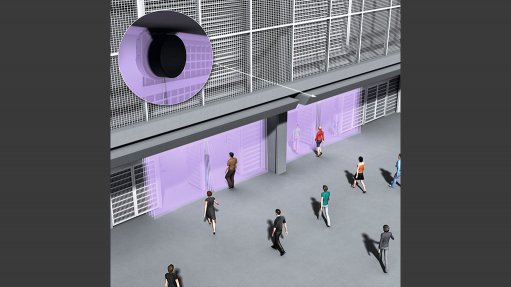
Sensor apps from SICK Automation measure distances and count people within a defined space
Two new sensor-based applications (apps) are designed to ensure that people maintain the recommended minimum physical distance in public and pre-defined spaces.
The applications are designed for use in various public spaces and industries, as well as in the tourism, restaurant and retail sectors. It allows for monitoring of the maximum occupancy of a space and the minimum distance between people.
The PeopleCounter (PeCo) and DistanceGuard SensorApps from SICK Automation combine its two-dimensional (2D) and three-dimensional (3D) laser imaging, detection, and ranging (LiDAR) sensors to measure distances and count people within a defined space.
The sensor solutions do not process personal information, ensuring that hygiene standards and data privacy regulations are observed.
The PeopleCounter
The PeCo SensorApp enables anonymous data processing and differentiates people from objects over large detection areas. Based on the hardware of the MRS1000 3D LiDAR sensor, measurement data is generated as a point cloud. The integrated PeCo app identifies people using their contours, which means that only people are counted while objects are blanked out. The process runs anonymously and without recording personal information.
The four layers of the sensor allow for the direction of movement of a person to be clearly established and the current utilisation of a defined zone to be monitored. The recorded data is transmitted via telegrams and digital outputs to keep track of the maximum number of people within a space. The combination of several sensors makes it possible to cover even large areas with different entry and exit areas, such as shopping centres, airports or trade fairs.
The DistanceGuard
The DistanceGuard SensorApp, in combination with the TiMxxx 2D LiDAR sensor, can detect the distance between two people. This is seen as especially useful in environments in which the currently recommended minimum distances between people must be upheld, for example when waiting in line at a store. As soon as the distance between two people falls short of the configured minimum distance, a signal is generated in the form of a light, a tone or a visual signal.